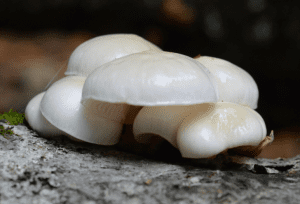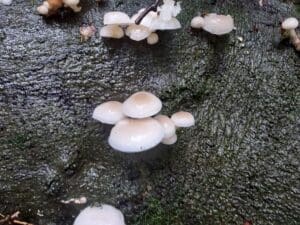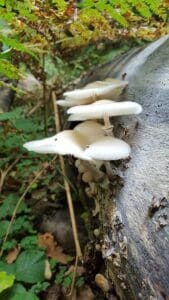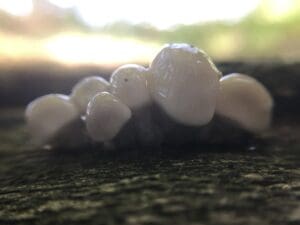Porcelain Fungus / Summer / Autumn / Edible
We’re going to take a look at Porcelain Fungus (Oudemansiella musida) Identification so we can feel confident in finding this mushroom when out in the woods.
Scientific Name
Oudemansiella musida
Common Names
Porcelain fungus, Poached egg fungus
Family
Physalacriaceae
Habitat
grows on the trunks of Beech, often high up and in large clusters
Description
Distinctive mushroom with a white glistening cap due to the slimy coating. Good for the pot but remove the slime and stems beforehand.
Identifying Features:
Cap:
2-8cm across, convex at first then flattening. Pale greyish when young, becoming white and often with an ochraceous flush at the centre. Caps are semi translucent and slimy. Pale grey when young but white when mature. Some may not have an ochraceous flush at the centre.
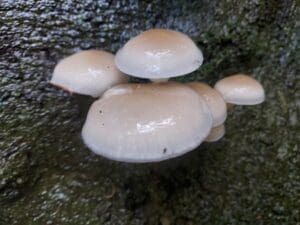
Stem:
White, thin and tough with a small skirt
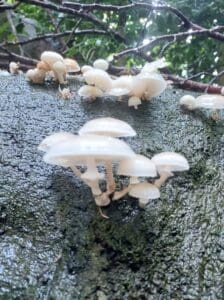
Gills:
White, quite distant and joined at the stem, adnate

Smell:
Not much of a smell but tastes very mushroomy when cooked.
Spores:
White spore print
Uses:
In food:
Good for the pot when added in with other mushrooms. Has a nice mushroomy flavour. This mushroom must be cooked and the slime removed prior to cooking.
Quite a common mushroom and can be seen growing in large numbers. Go for the larger specimens as the slime if very difficult to remove prior to use.
Known hazards
Must be cooked thoroughly with the slime removed before consumption.
Potential Lookalikes
There are no potential lookalikes with that slimy top!



